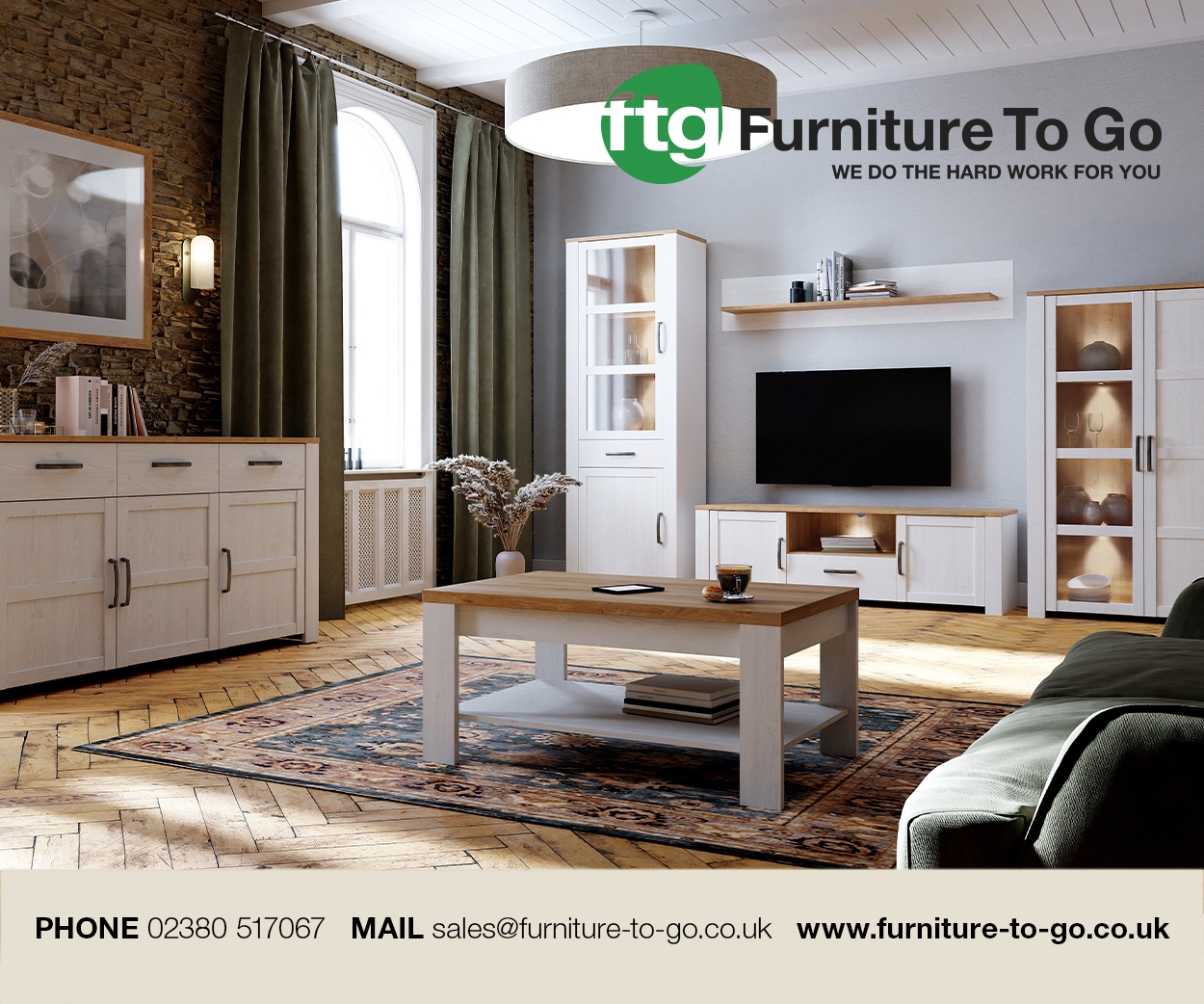Over the past decade, UK furniture shopping has changed tremendously. Traditional showroom visits and catalogue browsing have been increasingly replaced by digital-first approaches based on convenience and transparency. Modern customers require lean operations, clear prices, and complete product comparison – and digital aggregators have stepped in to solve this problem, by bringing together products from different retailers onto a single platform, writes e-tailer Shop Home Styles …
With digital aggregators, what you get is one place where everything becomes searchable and accessible. British consumers are experiencing a completely new way of shopping for furniture – people can now do their research properly and find pieces that match their style and budget.
Whether you're browsing established platforms or newer sites like ours, you'll discover everything from sleek minimalist pieces to luxury statement furniture that you'd normally only find in high-end showrooms or exclusive boutiques.
This shift isn't going anywhere – it's completely transformed how the furniture industry operates in the UK.
The current UK furniture retail landscape
The furniture market in the UK is very fragmented, which poses a great dilemma to consumers and retailers. The market is divided into thousands of separate retailers and large chains, in addition to online stores. Half the time, you can't find what you're after in stock, and trying to compare prices between different shops is a right pain. And small furniture shops struggle to get noticed outside their local area – most people don't even know they exist.
The numbers show just how much room there is for growth in this market – the market is worth £16.8b as of 2024, and it's expected to grow by +4.03% each year, reaching £24.1b by 2033.
The online sales boom took off during the pandemic when people's shopping habits changed, and everything had to happen faster. Clear and honest pricing, quick delivery options, and no-hassle shopping experiences fitting their lifestyles have become the norm for today's customers. Because conventional retail systems fail to meet these high expectations, traditional stores offer a perfect setting to devise new retail methods.
The consumer behaviour shift
The contemporary UK furniture consumer works in an environment of convenience, clarity and confidence. People nowadays aren't just buying the first thing they see. They're doing their homework first – hopping onto sites like FurnitureCompare or ufurnish.com to weigh prices, properly look at different styles, and determine which retailers can deliver when needed. Instead of choosing between numerous options, they seek specialised options that appeal to their interests and make choices convenient.
The shopping journey is mobile-first, and over 30% of Brits browse furniture through smartphones or tablets. This change is prompted by the lack of time, the ease of buying online, and the rising need to see the prices openly, particularly under the pressure of the cost of living crisis. Consumers also seek style inspiration, with trend hubs, social media and visual search tools being the most common sources of style inspiration.
Trust is what it all comes down to. People aren't just walking into shops and buying stuff anymore – they're doing their research first. They'll look at what kind of reputation a retailer has and read through customer reviews to get a feel for the quality and service they can expect. When you've got good reviews and real photos from actual customers, plus people recommending things to their mates, it makes a massive difference to whether someone decides to buy.
The digital aggregator model's sole purpose is to meet these changing consumer demands.
The digital aggregator model explained
Digital comparison sites work with loads of furniture shops to show all their products in one place.
But what actually happens behind the scenes? Retailers feed all their stock information, pricing and delivery details straight into the comparison site's system. Then the platform tidies everything up – makes sure product descriptions make sense, photos look decent, and you can compare like-for-like across different brands.
From your end, it's pretty simple. You search for what you need – say, a dining table under £500 – and the platform simultaneously shows you options from dozens of retailers. You can categorise your choices based on how fast you need it delivered, style, and material, and once you've located something you like, you can either purchase it right on the comparison site or get sent to the website's checkout page.
What to consider when choosing a comparison platform:
- Go for sites that actually vet their sellers and will stand behind you if things go pear-shaped
- Check whether they handle customer service themselves for everything you buy, rather than sending you off to deal with individual shops
- Compare delivery options – some aggregators co-ordinate shipping across retailers
- Make sure you understand the return policies – they're not always the same across different sellers on the platform
What's in it for shoppers? Well, they're not spending ages hopping between different websites any more. Prices are laid out properly so you can compare what you're getting. And here's the thing – you'll stumble across smaller retailers and boutique shops you'd never have found otherwise. Most of these platforms have your back, too, with proper buyer protection if something goes wrong.
Smaller retailers are loving this setup. They get to show off their products to loads more customers without needing to sort out complicated websites or blow their budget on advertising. You'll see their pieces sitting right next to the household names, and they look the part with proper photos and descriptions that don't sound like they were written in five minutes. It's given them a fighting chance against the major chains they couldn't compete with.
Success stories and market cases
Digital furniture aggregators have revolutionised UK shopping habits, with platforms like ufurnish.com reporting 78% customer retention rates. These services work because they solve a real problem – the hassle of checking multiple retailers for the best deals and availability.
Real consumer success examples:
- A couple from London managed to furnish their whole flat using comparison sites, looking at 12 different sofas from eight different shops in less than an hour and ending up £400 better off than if they'd bought from individual stores
- Small business owners say they've found brilliant office furniture from independent makers they'd never have come across otherwise
- Families moving house appreciate being able to co-ordinate delivery dates across multiple furniture purchases from different retailers through one platform
Independent retailers specialising in home accessories and decor have particularly benefited from increased visibility through these platforms. The model's effectiveness shows in key metrics – shoppers using aggregators reduce browsing time by -60% while experiencing -23% fewer returns than traditional online purchases. These platforms have become so valuable that 42% of conventional retailers now partner with them rather than compete directly.
How the retail landscape is changing
Conventional furniture retailers have never been under such pressure to change. Price transparency has eradicated the old markup techniques, and retailers are competing for real value. Many companies react by increasing their online presence with virtual showrooms and AI-based design tools. Others are keen on distinguishing factors such as artisanal craftsmanship or sustainability credentials – a wise decision, as 67% of UK consumers are more interested in eco-friendly materials.
The most successful adaptations blend old and new approaches. Established chains are creating 'hybrid hubs' that combine online curation with localised showroom experiences. Meanwhile, smaller independent shops use these partnerships with comparison sites to reach customers well beyond their local area. It shows how technology can create more opportunities than just disrupt existing ones.
Emerging industry trends
Three major trends are defining the future of furniture retail. Augmented reality (AR) has enabled customers to see the pieces in their homes, which has cut returns by -30%. Sustainability has gone beyond being a niche issue to becoming a mainstream requirement, with 73% of buyers preferring retailers that provide carbon-neutral delivery. In the back room, data analytics assists retailers in streamlining inventory, reducing costs by -18%, and increasing availability.
Such innovations are indicative of a more efficient customer-focused industry. Same-day delivery networks and personalised AI recommendations are no longer premium features but rather the norm. The retailers doing well in this environment view technology as an addition to human service rather than a substitute.
Conclusion
The emergence of curated furniture shopping is a paradigm shift in retail efficiency. Shoppers get more choices, and everything's laid out clearly for them, while retailers can tap into new markets without spending a fortune on marketing.
As the industry keeps changing, the ones who'll come out on top are those who can roll with the punches but still hang onto what makes physical shops special – the know-how of the staff, being able to touch and feel things, and that genuine craftsmanship you can see up close. It's not about online versus offline any more – it's about finding ways to combine both to get the best bits of each.








